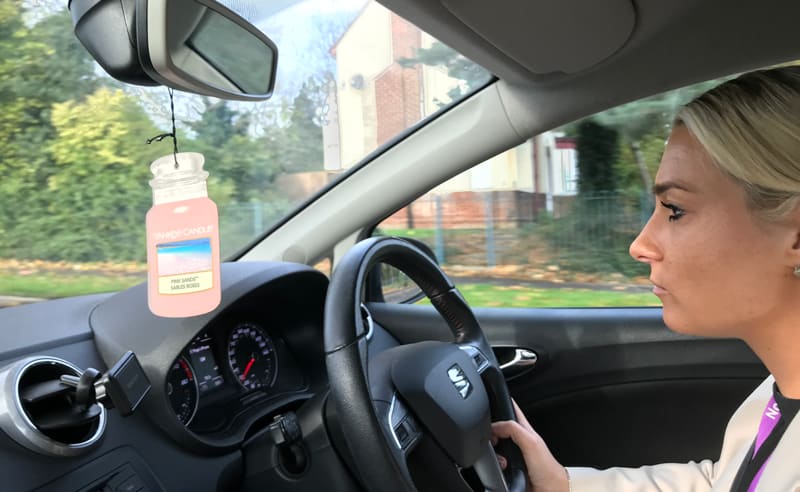[ad_1]
Every morning after registers – come rain, sleet or sun – up to six cars with experienced teachers leave North Shore Academy to go door knocking to boost attendance.
The school, in Stockton-on-Tees, was struggling with around 87 per cent attendance in 2017. Too many children were at home every day and leaders were determined to get kids back in the classroom.
In one year, staff did 4,000 home visits to ensure pupils had the support they need.
When Ofsted visited in July last year, attendance was 94 per cent. The school – ‘requires improvement’ in 2018 – was rated ‘outstanding’ in every category. Seventy per cent of pupils are entitled to free school meals.
‘It’s the challenge of breaking a culture’
Paige Leahy , attendance officer at the school, said door knocks focus on those with attendance below 97 per cent, or where there’s no reason for being off school.
Schools Week accompanied Lehay on a drive around this week. Before we left the school, the team were rattling through names to check who was in, calling parents. It was like a military operation.

Our hitlist was ready, so we hit the road. Three of the four door knocks went unanswered. But a note saying they had visited was pushed through the letterbox. If parents do not provide a reason for absence, they get another visit at 11am.
Lehay says it acts as a welfare check to “make sure they are poorly”.
Michael Robson, the head in 2017 who was behind the door-knocking strategy, said the policy is about safeguarding and checking if the family needs support.
But Robson, now executive principal of Northern Education Trust which has run the school since 2012, said there is also “a bit of challenge around knocking on the door repeatedly. “[It’s about] looking at parents and saying ‘I know you’re saying he’s not very well but it’s the fifth time this half term he’s missed a Friday’.
“Some of it was influencing change and a bit of challenge around breaking that culture of children being off when they really ought not to be.”
Home visits are arranged into postcode clusters, saving time.
Trust leads attendance push
The practice is now embedded across NET’s 22 schools, serving some of the most deprived areas in the north.
NET uses a trust-wide attendance dashboard which pulls data straight from management information systems overnight.
This shows real-time attendance patterns for all key groups of pupils. Principals must send a weekly report to the trust’s senior leaders.
NET has set up its own “attendance hub” – backed by government – to share their strategy for free with others.
In return, schools need to commit to revisit their own protocols. It got 250 requests to join, but has capped numbers at 58.
Less scope for smaller schools
But the pilot is only aimed at secondary schools with a “similar context and challenges to North Shore”.
It highlights a potential limitation with the situation – it requires money and, crucially, teacher time to be implemented properly.

NET can afford the investment because it uses lean staffing models based on curriculum-led financial planning. It means even smaller schools across the trust can benefit from the support.
“That’s where the advantage of our small schools being in a large MAT kick in,” Robson said. But it makes such an approach unrealistic for schools on their own or in smaller trusts.
While the government has hired 13 absence advisers to improve attendance nationally, a Schools Week investigation suggests over 600 attendance staff have been slashed from councils since 2010.
North Shore has three staff dedicated to just attendance, and also uses time from other non-teacher roles for the home visits.
The focus can also not let up. The school has already done more than 500 home visits this half-term alone, equating to 3,000 this academic year.
Attendance on the curriculum
Rob Tarn, NET’s chief executive, said other trusts are keen to run similar hubs, but based on their own specialisms to tailor their approach.
One of the schools involved in the hub is Queen Elizabeth Academy, in Warwickshire. It had persistent absence last year of 37 per cent. But this is now 17 per cent.
Beth Gibson, assistant principal, attributes the drop, in part, to their bespoke attendance curriculum which is taught in tutor time.
It translates how attendance could be problematic within college and employment, as well as the link to earnings such as hourly pay.
[ad_2]
Meet Our Successful Graduates: Learn how our courses have propelled graduates into rewarding
careers. Explore their success stories here!
Discover More About Your Future: Interested in advancing your teaching career? Explore our
IPGCE, MA, and QTS courses today!

Explore Our Courses: Ready to take the next
step in your education journey? View our
comprehensive course offerings now!

